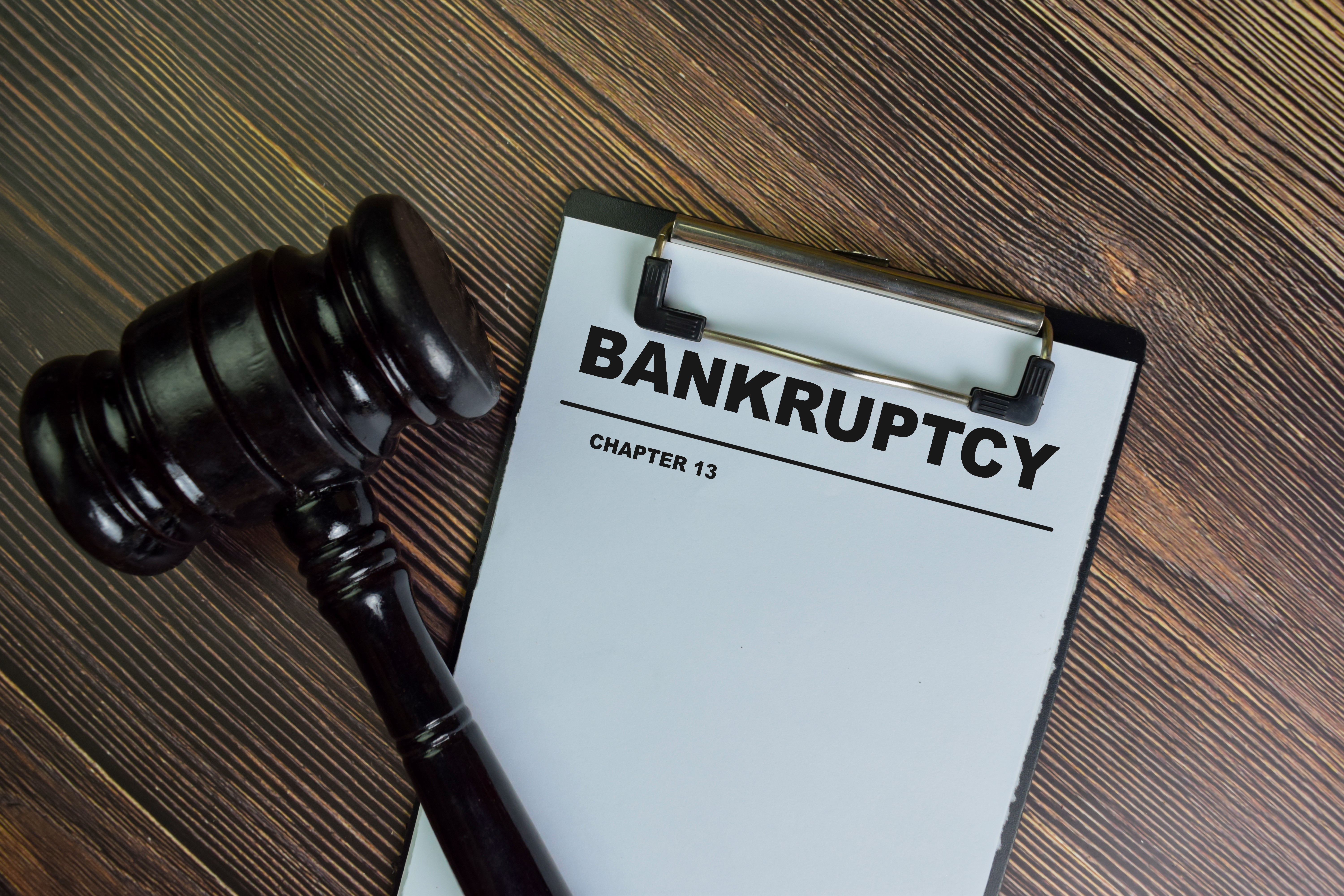Bankruptcy is a sensitive subject. For the person filing bankruptcy (the debtor), filing bankruptcy is the beginning of a long, arduous process of "starting over" financially and may include saying goodbye to homes, cars, and other valuable property. Unfortunately, for creditors, you very likely aren't going to get paid the money you're owed. When community members file bankruptcy, board members must handle the situation with care and act promptly to ensure they're abiding by all applicable laws and acting in the association's best interest. Here, we'll give an overview of the bankruptcy process, different types of bankruptcy filings, and some best practices for board members to consider when a community member files.
How Does Filing for Bankruptcy Work?
The first step is, of course, to begin the process by making the initial bankruptcy court filing. The person filing must fully disclose assets and liabilities – i.e., income and debts. Once those documents are filed, the federal bankruptcy protections automatically go into effect, and notice must be given to anyone to whom the debtor owes money. The debtor is usually represented by an attorney who will handle most of this on their behalf.
After the initial filing, a trustee is assigned to the case by the court. This person (typically an experienced bankruptcy lawyer) is charged with reviewing the case documents and determining the next steps based on whether the person has filed Chapter 7 or Chapter 13 (more on that in a bit). Ultimately, the trustee will be in charge of liquidating assets or reorganizing and disbursing payments, again depending on which type of bankruptcy has been filed.
Who else is involved? Well, the creditors, of course. It is at this point that the association comes in. It's important to remember that even if someone is current on their assessments at the time of filing, they'll still owe assessments in the future. Therefore the association is still a creditor.
Filing Chapter 7 - Debt Liquidation
When a person files Chapter 7, the majority of the time, there is no need for creditors to file claims because there is no money being distributed. These are called no-asset cases, and they typically run through the courts fairly quickly, in about six months or so. Debtors can keep a minimum amount of assets  allowed by law when they file Chapter 7 bankruptcy. If their assets are below the minimum, the debtor keeps everything, and there is no money to distribute to creditors. The trustee's job here is to confirm the lack of assets and that the debtor properly disclosed everything. In the rare instance that the debtor has assets beyond the minimum they are allowed to keep by law, then the trustee will sell that asset to pay the creditors. This is known as an asset case. However, even in an asset case, there still isn't much money to be had. Any money from a sold asset will be divided among the creditors pro-rata. Unless the person filing has a really valuable asset to be sold (which is unlikely since they filed bankruptcy in the first place), each creditor is likely only going to get a small payment toward what they are owed.
allowed by law when they file Chapter 7 bankruptcy. If their assets are below the minimum, the debtor keeps everything, and there is no money to distribute to creditors. The trustee's job here is to confirm the lack of assets and that the debtor properly disclosed everything. In the rare instance that the debtor has assets beyond the minimum they are allowed to keep by law, then the trustee will sell that asset to pay the creditors. This is known as an asset case. However, even in an asset case, there still isn't much money to be had. Any money from a sold asset will be divided among the creditors pro-rata. Unless the person filing has a really valuable asset to be sold (which is unlikely since they filed bankruptcy in the first place), each creditor is likely only going to get a small payment toward what they are owed.
Filing Chapter 13 - Debt Reorganization
A Chapter 13 bankruptcy is a much longer process than a Chapter 7 bankruptcy and involves a reorganization of debt instead of asset liquidation. This reorganization allows the debtor to keep their assets and enter into a plan to pay their creditors a certain amount each month over 3-5 years, though this period can vary. If someone in your community files a Chapter 13 bankruptcy, then it's crucial that the association files a claim at the case's onset. The association will be owed ongoing payments, and the trustee will disburse these funds each month.
Automatic Stay
Bankruptcy laws were created to protect the debtor. Therefore, associations must be very careful not to violate provisions of these laws once a member files for bankruptcy.
The automatic stay is one of the primary protections for people who file for bankruptcy. What is an automatic stay? Do they automatically have to stay in front of you until they come up with the money they owe? While an amusing thought, that is not what the law requires. Instead, the automatic stay is a requirement that creditors must immediately halt any activity intended to collect a debt, or else they can face stiff penalties. For your association, this means you need to stop sending collections letters or notices to the member. Easy enough, right? But what if they don't notify you that they've filed? There isn't anything you can do about that. However, if you keep sending periodic notifications, they'll likely have their attorney notify you, and it's at that point you must cease these communications to the debtor. So what should you do once you're notified that a member has filed for bankruptcy? Call your attorney!
So, is there anything else that is considered an attempt to collect a debt besides sending letters? For associations, there sure is. If your association suspends privileges (e.g., pool use) for those whose accounts are behind, suspending the privileges of someone who has filed bankruptcy could very well be considered an attempt to collect a debt. To protect yourself, you must consider their account as if it were current.
Dos and Don'ts of Handling Bankruptcy Filings in Your Community
Just as with anything, there are some best and worst practices for handling bankruptcy filings in your community.
Do:
- Have your association's attorney review the documents. You and your fellow board members don't necessarily need to know the ins and outs of the filing – that's what the attorney is for. And don't forget, when dealing with bankruptcies, you'll likely need an attorney who specializes in bankruptcies, as they can get quite complicated for even the most experienced attorneys if they're not used to dealing with these types of cases.
- File a claim! Have your attorney file proof of claim documenting the amount owed as of the filing date as well as any ongoing amounts owed to the association. If you fail to do this, you're probably out of luck as far as recouping any debt owed to the association.
- File your claim on time. There are deadlines surrounding the filing of claims, and these deadlines are not flexible. Therefore, if you receive notice that a member has filed for bankruptcy and you, the creditor, do not file your claims within the appropriate amount of time, the court will view your filing as an "untimely claim". What does this mean? Well, basically, that means that likely you will not be paid anything at all in the bankruptcy case.
Don't:
- Don't sit there and do nothing. If you don't act because you assume you won't get paid, you definitely won't get paid. As the case continues, sometimes assets are discovered. If that happens, then money may be distributed to creditors, so you may recoup something.
- Don't ignore the case. The automatic stay requires you to cease attempts to collect debts or face the consequences. What consequences? If the debtor takes you to court over this, you could end up paying damages and their attorney's fees. Plus, if the debtor successfully completes their bankruptcy, their debt to the association may be discharged. The bankruptcy discharge requires you to write off debts whether you want to or not.
What's Next?
It is important to note that most Chapter 13 filings are not completed successfully and are dismissed. Once the debtor fails to make the agreed-upon monthly payments, these cases are dismissed. So, what does dismissal mean? It means the bankruptcy filing never happened. So, why bother filing a claim at all? Because it can still take years for the case to be dismissed – the debtor may keep up with their payments for the first few years before they fall behind, so at least you've recouped some of the money the association is owed.
What if the Chapter 13 payment plan is completed successfully? Then the bankruptcy is discharged, and the debtor is granted a release of personal liability for all debts included in the filing. Keep in mind that this applies to personal debts, not liens, as those typically survive bankruptcy. This is why it's crucial to try to place liens on delinquent accounts, as they'll add an extra layer of financial protection for the association and increase the chances that you'll be able to get paid the money you're owed.
Bankruptcy is a tough situation. While you and your fellow board members may find it difficult to place liens on your neighbor, your ultimate fiduciary duty is to the association. By having a basic understanding of the bankruptcy process and how it applies to community associations, you'll have confidence in navigating the situation should one of your members file. But the biggest takeaway here should be to contact your association's attorney just as soon as you're informed a member has filed – they will be able to provide you with expert guidance throughout the entire process.
To learn more about the bankruptcy process and listen to an informative Q&A session, check out a recent "Ask the Experts" webinar we held on the topic.

























